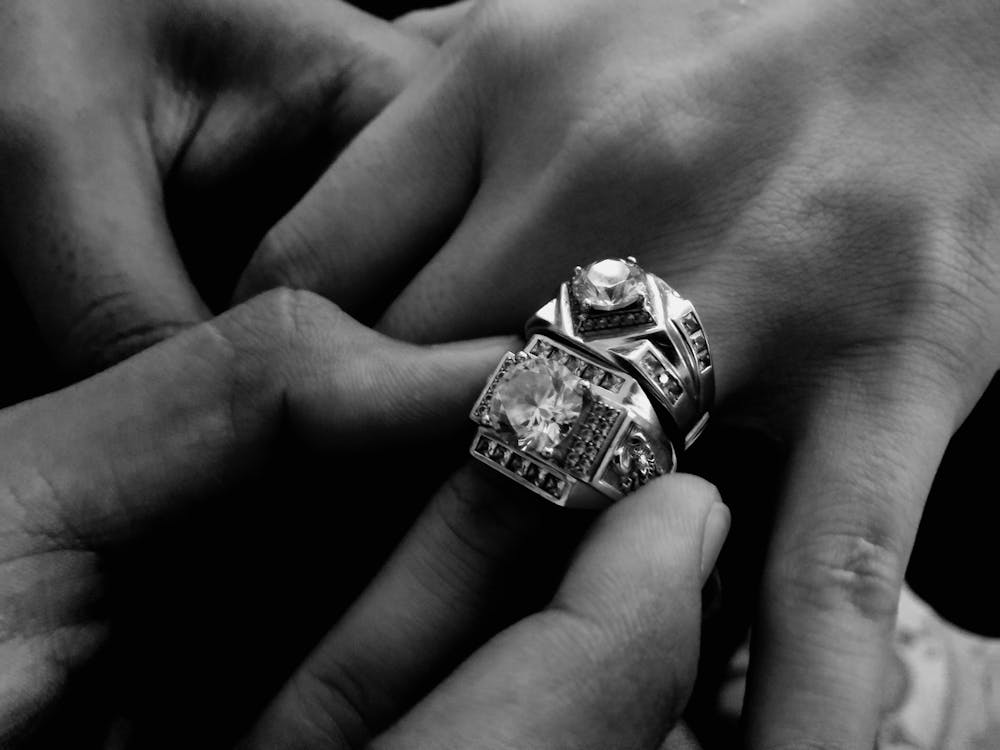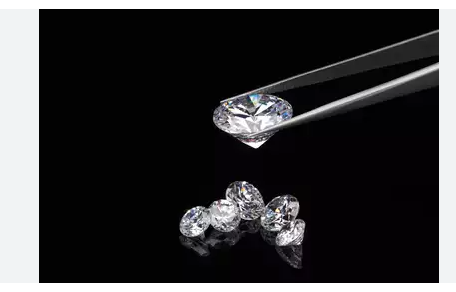
For centuries, mined diamonds have held an undeniable allure, symbolizing luxury, commitment, and enduring beauty. However, the ethical and environmental implications of traditional diamond mining have come under increasing scrutiny in recent years. This has led to the rise of lab-grown diamonds, a captivating alternative that boasts exceptional brilliance at a fraction of the environmental cost.
This article delves into the complexities surrounding mined and lab-grown diamonds, empowering you to make an informed decision that aligns with your values and budget.
The Allure of Mined Diamonds: A History Steeped in Mystery
Lab diamonds are natural wonders, forged under extreme heat and pressure within the Earth’s mantle over millions of years. Their age and rarity have traditionally fueled their prestige. The discovery of massive diamond deposits in South Africa during the late 19th century revolutionized the diamond trade, making them more accessible – albeit still a coveted luxury.
The De Beers Legacy and the Marketing of Desire
De Beers, a diamond mining and trading company, emerged as a dominant force in the early 20th century. Through shrewd marketing campaigns, they cultivated the enduring association of diamonds with love and commitment, solidifying their position as a cornerstone of traditional engagement rings. The now-iconic slogan, “A Diamond is Forever,” cemented the diamond’s status as a symbol of everlasting love and a significant financial investment.
The Shadow Side of Mining: Unveiling the Environmental and Ethical Concerns
While mined diamonds possess undeniable beauty, their journey from the Earth’s core to your finger can be fraught with ethical and environmental issues.
- Environmental Impact: Large-scale diamond mining can have a devastating impact on the environment. The process often involves clear-cutting forests, displacing wildlife, and contaminating water sources with heavy machinery and chemical use. Additionally, the energy consumption required for deep-pit mining is significant.
- Labor Concerns: Unethical labor practices can sometimes plague the diamond mining industry. Concerns include child labor, unsafe working conditions, and inadequate wages for miners. While significant strides have been made to improve practices through certifications like the Kimberley Process Certification Scheme (KPCS), challenges persist.
The Rise of Blood Diamonds: The term “blood diamond” refers to diamonds mined in war zones and used to fund armed conflict. While the KPCS has helped mitigate this issue, the concern remains a significant factor for ethically conscious consumers.
Lab-Grown Diamonds: A Sustainable Spark of Innovation
Lab-grown diamonds have emerged as a compelling alternative to mined diamonds. These remarkable gems are physically and chemically identical to their mined counterparts. The only difference lies in their origin: created in a controlled laboratory environment using cutting-edge technology.
- The Science Behind the Sparkle: There are two primary methods for growing diamonds in a lab: High-Pressure, High-Temperature (HPHT) and Chemical Vapor Deposition (CVD). Both methods replicate the extreme conditions present deep within the Earth, accelerating the diamond formation process from millions of years to a matter of weeks.
- Sustainable Brilliance: Lab-grown diamonds boast a significantly smaller environmental footprint compared to mined diamonds. They require less energy to produce, and the laboratory setting allows for stricter control over waste and emissions.
- Ethical Assurance: Lab-grown diamonds eliminate the ethical concerns associated with mined diamonds. You can be confident that your dazzling gem wasn’t mined at the cost of human suffering or environmental degradation.
Beyond the Basics: Exploring the Advantages of Lab-Grown Diamonds
While environmental and ethical considerations are paramount for many consumers, lab-grown diamonds offer additional advantages:
- Cost-Effectiveness: Due to the streamlined production process, lab-grown diamonds are typically priced 30-70% lower than mined diamonds of comparable quality. This makes them a more accessible option for those seeking a dazzling stone without the hefty price tag.
- Greater Choice and Customization: The controlled laboratory environment allows for greater control over the diamond’s characteristics. This can lead to a wider variety of cuts, colors, and clarities to choose from, enabling you to find the perfect stone for your taste and budget.
- Consistent Quality: Unlike mined diamonds, which can vary greatly in quality, lab-grown diamonds offer exceptional consistency. You can be assured that your diamond will possess the desired brilliance, fire, and scintillation.
Selecting Your Perfect Diamond: A Guide for the Discerning Buyer
Having explored the unique characteristics of Mined Diamonds Are Not Rare, here’s a practical guide to assist you in selecting the ideal stone:
- Define Your Budget: Diamonds come in a vast array of price points, so establish a realistic budget from the outset. This will help narrow down your options and streamline the selection process.
- The Four C’s: A Framework for Evaluation Regardless of whether you choose mined or lab-grown, diamond quality is assessed using the four Cs: Cut, Color, Clarity, and Carat weight.
- Cut: The cut refers to the proportions and angles of a diamond’s facets, directly impacting its brilliance and fire. A well-cut diamond will sparkle magnificently, reflecting light with exceptional playfulness.
- Color: While most diamonds possess a colorless appearance, slight variations exist. D is the highest color grade, signifying a complete absence of color. As you move down the scale, faint yellow hues might become noticeable. Ultimately, the ideal color grade depends on your personal preference and budget.
- Clarity: Clarity refers to the presence of any internal or external imperfections within the diamond, known as inclusions or blemishes. These imperfections can affect a diamond’s brilliance and value. Flawless or Internally Flawless diamonds are the rarest and most expensive, while diamonds with slight inclusions can offer a remarkable sparkle at a more accessible price point.
- Carat Weight: Carat weight simply refers to the size of the diamond. Remember, carat weight doesn’t solely dictate a diamond’s brilliance; cut plays a significant role. A well-cut diamond of lower carat weight can sparkle more than a poorly cut diamond with a higher carat weight.
- Seek Expert Guidance: A reputable jeweler can be your invaluable partner in navigating the diamond selection process. They can provide education on diamond quality, different diamond cuts, and certifications that ensure the diamond’s authenticity and quality.
- Consider Certifications: Reputable gemological institutes, such as the Gemological Institute of America (GIA) or the European Gemological Laboratories (EGL), provide independent diamond grading reports. These reports detail a diamond’s cut, color, clarity, and carat weight, offering valuable assurance to the buyer.
- The Allure of Tradition vs. Ethical Brilliance: Ultimately, the choice between mined and lab-grown diamonds boils down to your personal priorities. If the historical significance and potential investment value of a mined diamond resonate with you, that’s a perfectly valid choice. However, if environmental and ethical concerns hold greater weight, or you seek a more cost-effective option with exceptional brilliance, lab-grown diamonds offer a compelling alternative.
Beyond the Stone: Choosing the Perfect Setting
Once you’ve selected your dazzling diamond, the setting plays a crucial role in showcasing its beauty and complementing your personal style. Popular setting choices include:
- Prong Setting: A classic and versatile option, prong settings secure the diamond with delicate metal claws, allowing for maximum light exposure and sparkle.
- Bezel Setting: For a more secure and contemporary look, a bezel setting encircles the diamond’s entire crown, offering enhanced protection.
- Halo Setting: A halo setting features a smaller ring of diamonds surrounding the center stone, creating an illusion of increased size and brilliance.
The Final Sparkle: A Diamond that Reflects Your Values
With a plethora of factors to consider, choosing the perfect diamond can feel overwhelming. However, by understanding the unique characteristics of mined and lab-grown diamonds, prioritizing your values, and seeking guidance from a reputable jeweler, you can confidently select a dazzling stone that reflects your personal style and aligns with your ethical and environmental values. Let your diamond be a symbol not just of love and commitment, but also of informed and responsible consumerism.

